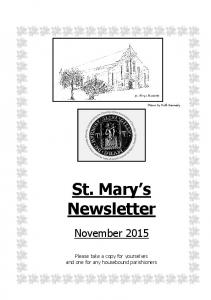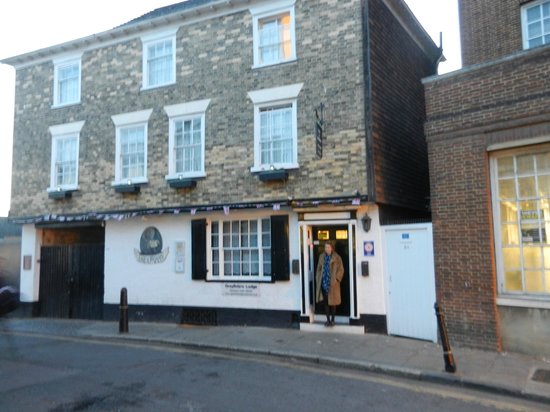Popular Posts
The work, implemented according to a specification supplied by the County Archaeologist Dr John Williams, was funded by Kent County Council Department of Highways and Transportation. St Gennys is a small parish just above the quaint little seaside village of Crackington Haven. With a picturesque sandy/stony little cove, perfect for swimming and body boarding. There is also beach cafes and a friendly local pub. You can also get onto the Coastal Path from here.

This hotel offers very good value for money, it\'s in a nice location, our room was nicely furnished and very clean with a lovely view of the garden. The breakfast was excellent.
We also had dinner in the 1181 restaurant which was great too. The staff were very efficient and polite. The only downside was the bathroom needed updating, just minor things like a cracked tile, chipped sink, towels were a bit old. The bed needs a more comfortable mattress too.
Apart from these minor complaints we really enjoyed our stay and would recommend the hotel to others.
Village History Notes taken from Kelly\'s Directories of Lincolnshire Grasby, notes from the past 1801 The population was 168 1831 The population was 287 1841 The population was 374 1861 The population was 433 1868 The area of the Parish is 1,720 acres. Thomas Curtis, Richard Cathbert, Daniel Jackson, George Middleton, William Thompson and George West are listed as farmers. Other tradesmen include tailor, shopkeeper, cattle dealer, grocer, bricklayer, beer retailer, butcher, miller, potato merchant, blacksmith, fellmonger and shoe maker. The Cross Keys belonged to Francis Wilson. The Post office has James Winship as receiver.
1871 The population was 408 1881 The population was 411 1885 The church is recorded with a tower and spire containing a clock and four bells, two of which were added in 1869, one in memory of Henry Selwood and the other of Mrs Tennyson, mother of the previous vicar, Charles Tennyson Turner and Lord Tennyson. One of the other bells has the date 1500. The Wesleyan chapel was built in 1840 and the primitive Methodist chapel was built in 1841 and enlarged in 1862.  The chief crops were wheat, barley and turnips George Barker, Richard Cathbert, Jane Precilla Foster, Foster Middleton, Edward Smith, Henry Smith, William Thompson and William Wilmore are listed as farmers. John Brighton, Robert Brompton, Thomas Dixon, Edward Eyre and Daniel Jackson are listed as cowkeepers. Edwin Smith is listed as a miller ( wind and steam ). George Frankish is listed as a carpenter and shoe maker.
The chief crops were wheat, barley and turnips George Barker, Richard Cathbert, Jane Precilla Foster, Foster Middleton, Edward Smith, Henry Smith, William Thompson and William Wilmore are listed as farmers. John Brighton, Robert Brompton, Thomas Dixon, Edward Eyre and Daniel Jackson are listed as cowkeepers. Edwin Smith is listed as a miller ( wind and steam ). George Frankish is listed as a carpenter and shoe maker.

Jane Cross is listed for the Cross Keys. 1891 The population was 347 1901 The population was 355 1909 This entry records the Primitive Methodist chapel as being rebuilt in 1893. The Parish clerk was J.B.Frankish.
The average attendance at the school was 103. Charles Coupland, Henry Dudding, Charles Hall, William Hatliff, Robert Keighley, George Markham, Philip Markham, Sophia Middleton, and William Wilmore are listed as farmers. Edwin Smith as a miller and farmer.
Frankish is a carpenter and assistant overseer as well as Parish clerk. Sarah Alice Frankish is a shoemaker. James Lacey is recorded as a lime burner. 1911 The population was 373 1919 The chief crops are wheat, barley, market garden produce and turnips. The motor omnibus passes through on Monday, Wednesday, Friday, Saturday and Sunday. Edward Barron, Charles Coupland, Robert Keighley, George Markham, Philip Markham, Sophia Middleton, Edwin Smith, and William Wilmore are listed as farmers.
Charles Papworth as a market gardener and Thomas Sellers as a cowkeeper. Herbert Frankish is a shoemaker, John R. Frankish a carpenter, overseer and Parish clerk. Frederick Hasnip is the blacksmith.
1936 Clixby Parish ceased to be a parish in it’s own right and was amalgamated with Grasby Parish. The 1,261 acres of Clixby, now made Grasby Parish 2,961 acres. 1948 Around this time the spire on Grasby All Saints church was considered unsafe, so it was taken down and the tower topped as it appears today. Apparently taking the spire down proved to be much more difficult than expected, casting doubts on the “unsafe” diagnosis. Photographs of the church complete with spire do existed, as does a painting of the church and school viewed from somewhere near the cross roads, showing a stooked cornfield in the foreground. The Primitive Methodist chapel on Main Street is now a fine dwelling. The Wesleyan Chapel was demolished in around 2000, when construction of the houses on the north side of Vicarage Lane, in the old quarry yard, started.
...'>Cracking Glass Sturry Parish Council(18.09.2018)The work, implemented according to a specification supplied by the County Archaeologist Dr John Williams, was funded by Kent County Council Department of Highways and Transportation. St Gennys is a small parish just above the quaint little seaside village of Crackington Haven. With a picturesque sandy/stony little cove, perfect for swimming and body boarding. There is also beach cafes and a friendly local pub. You can also get onto the Coastal Path from here.

This hotel offers very good value for money, it\'s in a nice location, our room was nicely furnished and very clean with a lovely view of the garden. The breakfast was excellent.
We also had dinner in the 1181 restaurant which was great too. The staff were very efficient and polite. The only downside was the bathroom needed updating, just minor things like a cracked tile, chipped sink, towels were a bit old. The bed needs a more comfortable mattress too.
Apart from these minor complaints we really enjoyed our stay and would recommend the hotel to others.
Village History Notes taken from Kelly\'s Directories of Lincolnshire Grasby, notes from the past 1801 The population was 168 1831 The population was 287 1841 The population was 374 1861 The population was 433 1868 The area of the Parish is 1,720 acres. Thomas Curtis, Richard Cathbert, Daniel Jackson, George Middleton, William Thompson and George West are listed as farmers. Other tradesmen include tailor, shopkeeper, cattle dealer, grocer, bricklayer, beer retailer, butcher, miller, potato merchant, blacksmith, fellmonger and shoe maker. The Cross Keys belonged to Francis Wilson. The Post office has James Winship as receiver.
1871 The population was 408 1881 The population was 411 1885 The church is recorded with a tower and spire containing a clock and four bells, two of which were added in 1869, one in memory of Henry Selwood and the other of Mrs Tennyson, mother of the previous vicar, Charles Tennyson Turner and Lord Tennyson. One of the other bells has the date 1500. The Wesleyan chapel was built in 1840 and the primitive Methodist chapel was built in 1841 and enlarged in 1862.  The chief crops were wheat, barley and turnips George Barker, Richard Cathbert, Jane Precilla Foster, Foster Middleton, Edward Smith, Henry Smith, William Thompson and William Wilmore are listed as farmers. John Brighton, Robert Brompton, Thomas Dixon, Edward Eyre and Daniel Jackson are listed as cowkeepers. Edwin Smith is listed as a miller ( wind and steam ). George Frankish is listed as a carpenter and shoe maker.
The chief crops were wheat, barley and turnips George Barker, Richard Cathbert, Jane Precilla Foster, Foster Middleton, Edward Smith, Henry Smith, William Thompson and William Wilmore are listed as farmers. John Brighton, Robert Brompton, Thomas Dixon, Edward Eyre and Daniel Jackson are listed as cowkeepers. Edwin Smith is listed as a miller ( wind and steam ). George Frankish is listed as a carpenter and shoe maker.

Jane Cross is listed for the Cross Keys. 1891 The population was 347 1901 The population was 355 1909 This entry records the Primitive Methodist chapel as being rebuilt in 1893. The Parish clerk was J.B.Frankish.
The average attendance at the school was 103. Charles Coupland, Henry Dudding, Charles Hall, William Hatliff, Robert Keighley, George Markham, Philip Markham, Sophia Middleton, and William Wilmore are listed as farmers. Edwin Smith as a miller and farmer.
Frankish is a carpenter and assistant overseer as well as Parish clerk. Sarah Alice Frankish is a shoemaker. James Lacey is recorded as a lime burner. 1911 The population was 373 1919 The chief crops are wheat, barley, market garden produce and turnips. The motor omnibus passes through on Monday, Wednesday, Friday, Saturday and Sunday. Edward Barron, Charles Coupland, Robert Keighley, George Markham, Philip Markham, Sophia Middleton, Edwin Smith, and William Wilmore are listed as farmers.
Charles Papworth as a market gardener and Thomas Sellers as a cowkeeper. Herbert Frankish is a shoemaker, John R. Frankish a carpenter, overseer and Parish clerk. Frederick Hasnip is the blacksmith.
1936 Clixby Parish ceased to be a parish in it’s own right and was amalgamated with Grasby Parish. The 1,261 acres of Clixby, now made Grasby Parish 2,961 acres. 1948 Around this time the spire on Grasby All Saints church was considered unsafe, so it was taken down and the tower topped as it appears today. Apparently taking the spire down proved to be much more difficult than expected, casting doubts on the “unsafe” diagnosis. Photographs of the church complete with spire do existed, as does a painting of the church and school viewed from somewhere near the cross roads, showing a stooked cornfield in the foreground. The Primitive Methodist chapel on Main Street is now a fine dwelling. The Wesleyan Chapel was demolished in around 2000, when construction of the houses on the north side of Vicarage Lane, in the old quarry yard, started.
...'>Cracking Glass Sturry Parish Council(18.09.2018)

